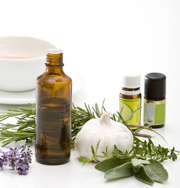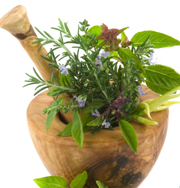Saffron
Botanical Name of Saffron - Crocus sativus
Synonyms - Saffron crocus
About Saffron
Saffron is the most costly of spices. It is taken from the flower of Crocus sativus which is also called saffron crocus. The dried stigmas are mainly used in different cuisines as a seasoning and colouring agent. It is mainly found in Southwest Asia. This was first cultivated in Greece and later on spread to North America, North Africa and Oceania. Its bitter taste is from chemicals like picrocrocin and safranal and it contains acarotenoid dye which gives the dishes and even textiles a golden yellow tone. The stigmas of each flower have to be plucked by hand and there are only a few stigmas per flower. This makes it the most expensive spice in the world.
History of Saffron
The origin of the word saffron is not known. Same is the case with the cultivated saffron. There are talks of the word saffron originating from the Latin word safranum. The word safranum came from the 12th century French word sarfran. It is also said that it is derived from Arabic word zafaran. This is a perenial plant flowering in autumn. It is widely known as wild saffron in Central Asia. It grows in climates where hot and dry summer breeze occur. It needs a moist environment and if grown without a moist environment, irrigation is needed.
Properties of Saffron
The saffron plant does not grow well in shady climate. They need the full glow of sunlight to grow in abundance. The fields sloping towards the sunlight is the best place to grow saffron. Planting is usually done in the Northern Hemisphere in the month of June. The factors influencing yield are planting depth and spacing and the climate.
Dry saffron is highly susceptible to variable pH levels. It breaks down chemically when exposed to bright light and oxidising agents. Make sure to store saffron in air tight containers to reduce contact with oxygen. Saffron is more resistant to heat.
Health Benefits and Applications Saffron
The aroma of Saffron is being described as metallic honey with hay. The taste has been described as hay like and sweet. It is used as a colouring agent in food items. It is widely used in Indian, European, Arab, Turkish and Persian cooking. Liquor and confectioneries also use saffron in their products. In China and India saffron is used as a fabric dye. It is used in perfumes too. Apart from cooking, saffron is used for religious purposes in India. It is given to small children along with the food for a glowing skin. It is believed that the consumption of saffron makes the skin radiant and glowing.
There are many medicinal histories for saffron as part of traditional healing.
It has properties which is cancer suppressing
It is mutation preventing( anti-mutagenic)
It has antioxidant properties
Its stigmas and petals helps depression
It protect eyes from direct effects of bright light
It is mentioned that saffron has many potential medicinal properties
Storage: Store in cool and dark place, Keep away from heat and spark
if you have any queries please feel free to contact
Wholesale / Bulk orders / Exports can contact us to get special shipping rates





